Balagrae (El Beida)
Q35784Balagrae: ancient town in Cyrenaica, best known for its Asclepium, modern El Beida.
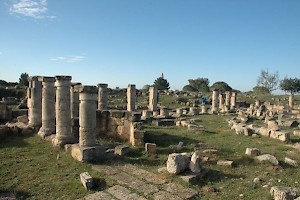
El Beida ("white town") is probably best known as the place where Muhamad Ali as-Senussi in 1843 founded the famous brotherhood that was to become the focus of resistance against the Ottoman and Italian rulers in the late nineteenth and early twentieth century. In 1964, Muhamad Ali's grandson, king Idris of Libya, made El Beida his capital. His palace is now a university. The city, however, might as well have become famous for the temple of Asclepius, which once had -if the finds are a reliable indication- a great reputation for helping children.
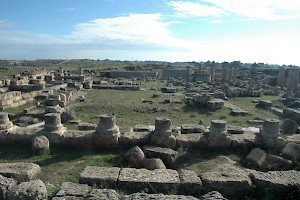
The Asclepium is essentially a large platform that once supported a square of 40 x 35 meters, surrounded by porticoes and dominated by three small temples. The central one was probably dedicated to the god Asclepius, who was venerated at Balagrae as Iatros ("doctor"note); one of the others may have served as shrine of Serapis, whose portrait is now in the little, permanently closed museum across the street. According to an inscription, the complex was built during the reign of the Roman emperor Hadrian (r.117-138).
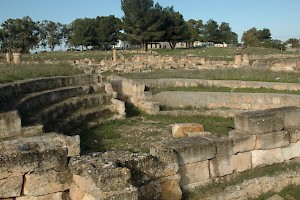
Balagrae's cult of the healing god was inspired by the Asclepium of Epidauros in Greece - Pausanias even seems to imply that the temple of Doctor Asclepius in Cyrenaica was founded by Epidaurians. Indeed, we can find the customary elements of "daughters" of Epidauros: temple, altar, fountain, dormitory. The rituals will have been similar as well: the patients visiting the shrine were probably invited to sleep in one of the incubation halls, and had to take notice of what they dreamed. This was believed to be a clue for the cure. In reality, the priests knew a thing or two about medicine, and were able to interpret the dreams in such a way that they seemed to indicate a decent cure. The presence of substantial water conducts suggest that the patients had access to sanitation facilities.
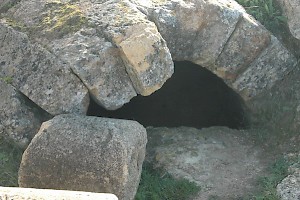
Part of the Asclepium was the Odeon, where people could listen to sophists or concerts. It was known in Antiquity that people suffering from mental diseases can greatly benefit from listening to quiet music, and it is possible that the Asclepium staff included musicians. The room may also have been used for meetings of the medical staff. In 1956, a large collection of Roman coins was discovered in the odeon.
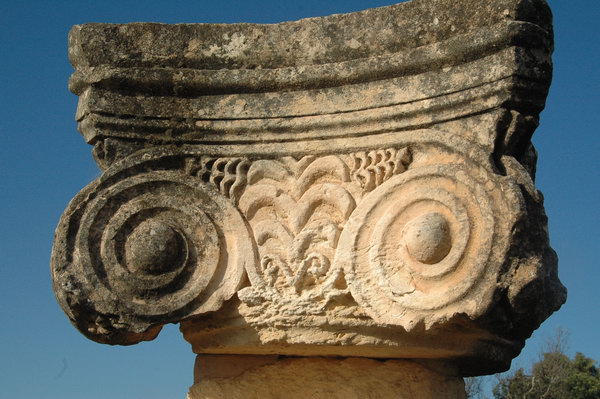
The porticoes were supported by columns with Ionic capitals, but they were not of the usual type: between the volutes, there was a representation of the medicinal plant called silphium. This bitter, locally produced herb was one of the main sources of wealth of nearby Cyrene; according to Pliny the Elder, it was an excellent contraceptive,note and other authors say that it was a cure against throat diseases and cough.
The site was looted in Late Antiquity, and many stones were reused in the well-preserved Byzantine fort and church (Qasrin as-Sairat al-Djamal).